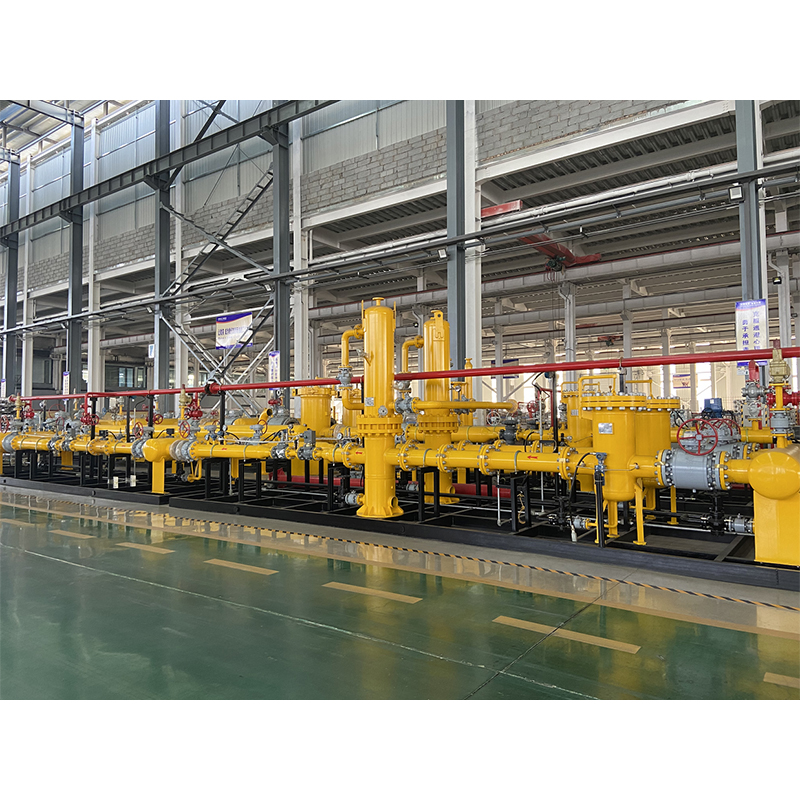
7 月 . 26, 2024 23:10
Back to list
Understanding the Principles and Applications of Cyclone Separator Technology in Industrial Processes
The Cyclone Separator An Essential Tool in Dust Control
Cyclone separators have emerged as a vital technology in various industrial processes, particularly for dust control and the efficient separation of particles from gases and liquids. These centrifugal separators are widely used across multiple sectors, including manufacturing, mining, and food processing, to clean air streams, enhance product quality, and protect equipment from wear and tear caused by particulate matter.
How Cyclone Separators Work
The fundamental principle behind cyclone separators lies in the utilization of centrifugal force. When a gas or liquid containing particulate matter enters the cyclone, it is forced to spin in an upward spiral. The design of the cyclone incorporates a conical structure that causes the flow to slow down and turn. As the mixture spirals, the denser particles experience a greater centrifugal force than the lighter gas or liquid, causing them to move toward the wall of the cyclone. Once at the wall, these particles descend due to gravity into a collection hopper at the bottom, while the cleaner gas continues to rise through the center and exit at the top.
Advantages of Cyclone Separators
One of the primary advantages of cyclone separators is their efficiency. They provide a cost-effective solution for dust control with minimal maintenance requirements. Cyclones can handle large volumes of air or liquid and operate effectively across a wide range of flow rates and particle sizes. Additionally, they do not require complex moving parts, which reduces the likelihood of mechanical failure.
Another significant benefit is their high reliability. Cyclone separators can function under various temperature and pressure conditions and can effectively separate a wide array of particulate matter. This versatility makes them suitable for industries where other filtration methods may be less effective or more complicated.
cyclone separator

Moreover, cyclone separators are environmentally friendly. They help minimize pollution by capturing airborne dust and particulate matter before it can be released into the atmosphere. By reducing dust emissions, industries can comply with environmental regulations and contribute to cleaner air quality.
Applications in Various Industries
Cyclone separators find their applications across numerous industries. In the food processing sector, they are used to remove contaminants from flour, sugar, and other powdered products, thus ensuring product purity and safety. In the pharmaceutical industry, they help maintain clean environments by controlling airborne particles.
The mining and mineral processing industries often utilize cyclone separators to separate valuable minerals from waste materials. This not only improves the recovery rates of desired products but also aids in waste management efforts.
In the woodworking industry, cyclones play a crucial role in sawdust extraction, preventing the buildup of flammable materials and reducing the risk of fire hazards. Furthermore, in power generation, they are employed in power plants to prevent ash and other particulates from entering flue gas systems.
Conclusion
In conclusion, cyclone separators are fundamental components in various industrial applications, providing an efficient, reliable, and environmentally friendly method for dust control and particle separation. Their ability to operate without complicated machinery, combined with their high productivity and versatility, makes them an indispensable tool in maintaining operational efficiency and safety. As industries continue to prioritize clean air and sustainability, the significance of cyclone separators is expected to grow, further solidifying their role in modern manufacturing and processing environments.
Latest news
-
Unlocking The Quality Gas Pressure ReducersNewsNov.01,2024
-
The Role of Gas Pressure Reducing StationsNewsNov.01,2024
-
The Importance and Functionality of Safety Relief ValvesNewsNov.01,2024
-
The Essential Role of Safety Valves in Natural Gas ApplicationsNewsNov.01,2024
-
The Essential Role of Gas Pressure RegulatorsNewsNov.01,2024
-
Enhance Your Premium Gas FiltersNewsNov.01,2024

